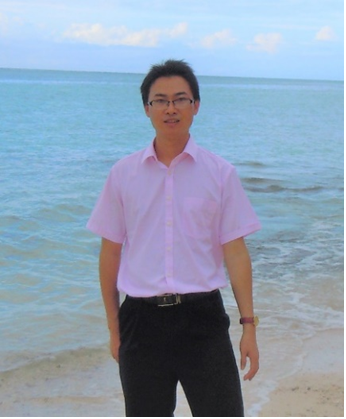
Prof. Qilong Zhu
Tel.:86-591-63173129
E-mail: qlzhu@fjirsm.ac.cn
Group website:http://www.fjirsm.cas.cn/research/R1/zql/
Research Interests:
(1) Metal-organic frameworks (MOFs), covalent organic frameworks (COFs), carbon-based materials, metal oxides and other porous materials;
Publications:
1. Yuehong Wen, Jie Zhang, Qiang Xu*, Xin-Tao Wu, and Qi-Long Zhu*, Pore Surface Engineering of Metal–Organic Frameworks for Heterogeneous Catalysis, Coord. Chem. Rev., 2018, 376, 248–276.
2. Qi-Long Zhu, Pradip Pachfule, Patrick Strubel, Zhangpeng Li, Ruqiang Zou*, Zheng Liu, Stefan Kaskel*, and Qiang Xu*, Fabrication of Nitrogen and Sulfur Co-Doped Hollow Cellular Carbon Nanocapsules as Efficient Electrode Materials for Energy Storage, Energy Storage Mater., 2018, 13, 72–79.
3. Fu-Zhan Song#, Qi-Long Zhu#, Xinchun Yang, Wen-Wen Zhan, Pradip Pachfule, Nobuko Tsumori, and Qiang Xu*, Metal-Organic Framework-Templated Porous Carbon-Metal Oxide/Reduced Graphene Oxide as Superior Support of Bimetallic Nanoparticles for Efficient Hydrogen Generation from Formic Acid, Adv. Energy Mater., 2018, 8, 1701416. (Back-cover paper)
4. Song Dang#, Qi-Long Zhu#, and Qiang Xu*, Nanomaterials derived from metal-organic frameworks, Nat. Rev. Mater., 2017, 2, 17075.
5. Yuehong Wen, Tianlu Sheng, Xiaoquan Zhu, Chao Zhuo, Shaodong Su, Haoran Li, Shengmin Hu, Qi-Long Zhu*, and Xintao Wu*, Introduction of Red-Green-Blue Fluorescent Dyes into a Metal-Organic Framework for Tunable White Light Emission, Adv. Mater., 2017, 29, 1700778.
6. Qi-Long Zhu#, Wei Xia#, Li-Rong Zheng, Ruqiang Zou*, Zheng Liu, and Qiang Xu*, Atomically Dispersed Fe/N-Doped Hierarchical Carbon Architectures Derived from a Metal–Organic Framework Composite for Extremely Efficient Electrocatalysis, ACS Energy Lett., 2017, 2, 504–511. (Hot paper)
7. Qi-Long Zhu and Qiang Xu*, Immobilization of Ultrafine Metal Nanoparticles to High-Surface-Area Materials and Their Catalytic Applications, Chem, 2016, 1, 220–245.
8. Qi-Long Zhu#, Wei Xia#, Tomoki Akita, Ruqiang Zou*, and Qiang Xu*, Metal-organic framework-derived honeycomb-like open porous nanostructures as precious-metal-free catalysts for highly efficient oxygen electroreduction, Adv. Mater., 2016, 28, 6391-6398. (Hot paper)
9. Qi-Long Zhu, Nobuko Tsumori, and Qiang Xu*, Immobilizing Extremely Catalytically Active Pd Nanoparticles to Carbon Nanospheres: A Weakly-Capping Growth Approach, J. Am. Chem. Soc., 2015, 137, 11743–11748. (Press-release paper)
10. Qi-Long Zhu and Qiang Xu*, Liquid organic and inorganic chemical hydrides for high-capacity hydrogen storage, Energy Environ. Sci., 2015, 15, 478–512.
11. Fu-Zhan Song#, Qi-Long Zhu#, Nobuko Tsumori, and Qiang Xu*, Diamine-Alkalized Reduced Graphene Oxide: Immobilization of Sub-2 nm Palladium Nanoparticles and Optimization of Catalytic Activity for Dehydrogenation of Formic Acid, ACS Catal., 2015, 5, 5141–5144.
12. Qi-Long Zhu and Qiang Xu*, Metal-Organic Framework Composites, Chem. Soc. Rev., 2014, 43, 5468–5512. (Front-cover paper and Hot paper)
13. Qi-Long Zhu, Di-Chang Zhong, Umit B. Demirci, and Qiang Xu*, Controlled synthesis of ultrafine surfactant-free NiPt nanocatalysts towards efficient and complete hydrogen generation from hydrazine borane at room temperature, ACS Catal., 2014, 4, 4261–4268.
14. Qi-Long Zhu, Nobuko Tsumori, and Qiang Xu*, Sodium Hydroxide-Assisted Growth of Uniform Pd Nanoparticles on Nanoporous Carbon MSC-30 for Efficient and Complete Dehydrogenation of Formic Acid under Ambient Conditions, Chem. Sci., 2014, 5, 195–199.
15. Qi-Long Zhu, Jun Li, and Qiang Xu*, Immobilizing Metal Nanoparticles to Metal–Organic Frameworks with Size and Location Control for Optimizing Catalytic Performance, J. Am. Chem. Soc., 2013, 135, 10210–10213.
(2) Small molecule activation, water decomposition, oxygen reduction, CO2 reduction, N2 activation, etc. (light and electricity) catalysis;
(3) Energy conversion and storage: batteries, thermoelectric materials, nonlinear optics, etc.